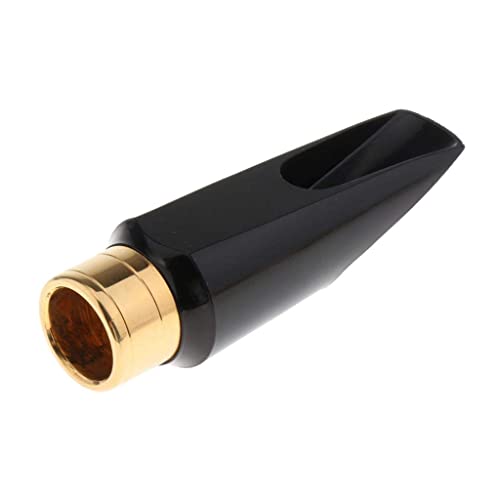As a saxophonist, it’s important to take care of your gear to ensure it lasts as long as possible and plays at its best. Unfortunately, many saxophonists make simple mistakes that can harm their gear over time. This post will cover some of the most common saxophone gear mistakes and how to avoid them.
Hard rubber mouthpiece in the sun
You may have noticed that some of your mouthpieces have faded to a brownish-green color. This is caused by UV rays and sunlight oxidizing the hard rubber. Not only does this affect the appearance, but it can also result in an unpleasant odor and taste from sulfuric acid leeching from the rubber. To prevent this, keep your hard rubber mouthpieces out of direct sunlight as much as possible.
Hot water on hard rubber mouthpieces
Another mistake saxophonists make is using hot water to clean their hard rubber mouthpieces. This can result in discoloring, a terrible taste, and a loss of value. Instead, only use cold water when cleaning your mouthpiece.

Not swabbing
Swabbing is the absolute bare minimum for saxophone maintenance and hygiene. If you swab out your mouthpiece every time after playing, it will always be relatively clean and won’t need to be washed. Mouthpieces that don’t get swabbed out can end up with nasty deposits of gunk that harden and become difficult to remove over time. Not only is this disgusting, but it can also alter how the mouthpiece plays by adding material to the interior. Swabbing will not damage your mouthpiece unless you’re using sandpaper.
Leaving the mouthpiece on the neck
When you’re not playing, make sure to remove the mouthpiece from the neck cork. Leaving it on can result in the cork hardening and becoming brittle over time, and can also over-compress the cork, resulting in a less optimal fit.
Putting the saxophone down on the wrong side
When laying your saxophone flat on a table, it may seem logical to lay it down on the side with fewer keys. However, the back side of the saxophone has keys sticking out of it like the palm keys and the left-hand pinky keys. When the saxophone is lying on this side, the weight is being supported by these keys, which isn’t the best. A good saxophone stand is the best option, but if you don’t have one available, the next best option is to lay it on its side with the keys facing up.
Not lubricating the saxophone
Saxophones need to be lubricated to ensure smooth operation of the keys and prevent wear and tear. A small amount of lubricant should be applied to the rods, hinge tubes, and pivot points.
Not protecting the saxophone
Saxophones are expensive instruments, and it’s important to protect them from damage. A good saxophone case or gig bag is a must-have to protect your saxophone from dings, scratches, and other damage.
Not cleaning the saxophone
Saxophones need to be cleaned regularly to remove dirt, grime, and other debris that can accumulate over time. A microfiber cloth or a particular saxophone cleaning solution can be used to clean the body, keys, and neck.
Not checking the saxophone for damage
Before playing, it’s important to check your saxophone for any damage or wear and tear. This includes checking for dents, cracks, and other damage. If you notice any issues, it’s important to get them fixed as soon as possible.

